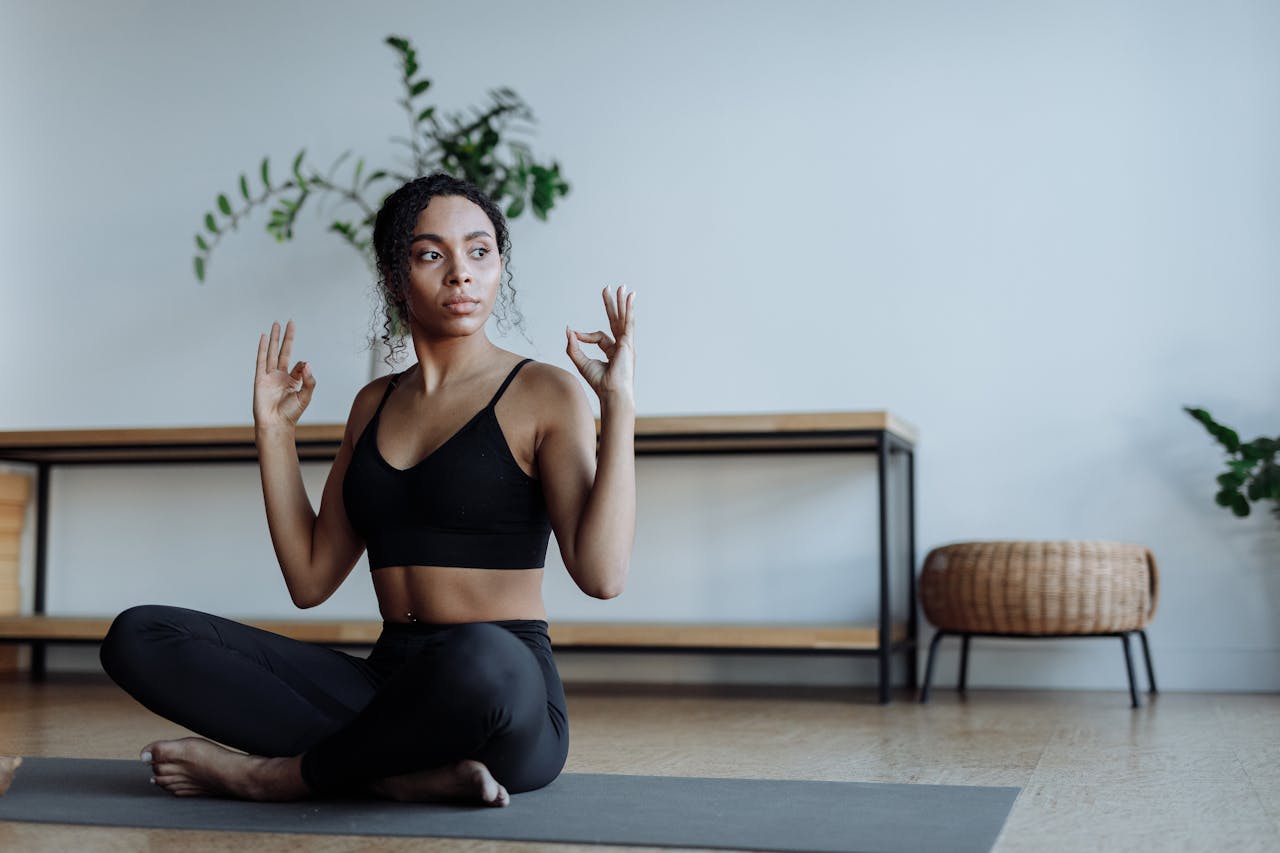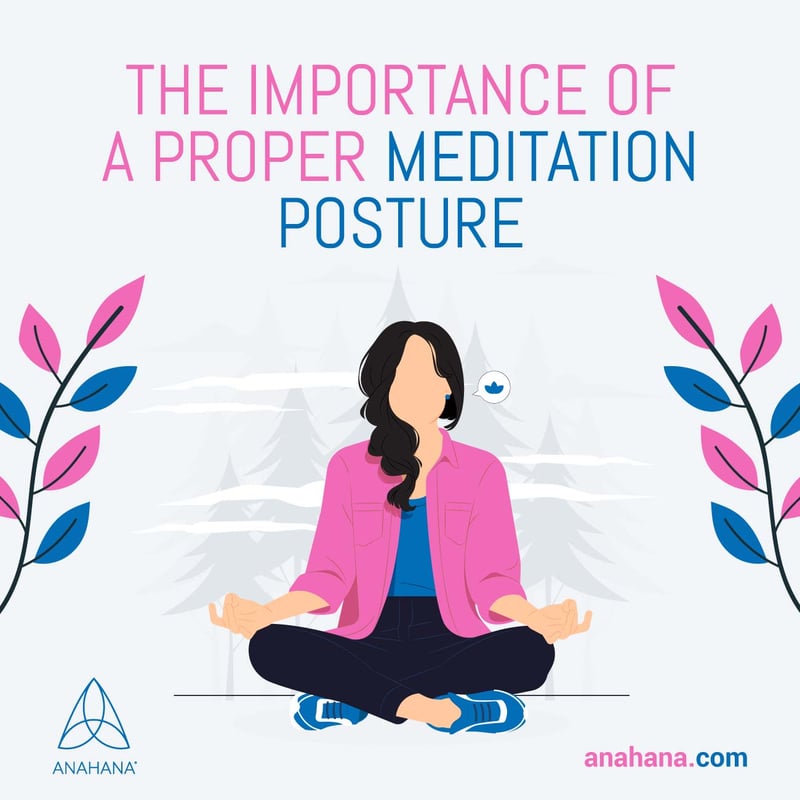
Table of Contents
Discover the Right Meditation Positions: Explore this guide for practical insights on various meditation positions. Learn how to find comfort and stability while sitting, kneeling, or lying down, enhancing your meditation practice. Elevate your mindfulness journey with straightforward tips on optimizing posture for inner peace and focus.
Meditation Positions
If meditation is like hitting the reset button for our brains, then choosing the correct meditation position is similar to ensuring you have the best tools for the job.
There are many meditation poses, so knowing which is right for you can be tough. But trust me, taking the time to figure it out is worth it. It'll make all the difference in getting the most out of your meditation sessions and creating a consistent practice.
Feel free to experiment to find the proper position for you. Whether sitting cross-legged, lying down, or something in between, finding your perfect pose can bring you closer to achieving inner peace.
Types of Meditation Postures
Getting comfortable isn't always as straightforward as it sounds, especially when it comes to meditation. Your posture can really shape your meditation experience, affecting everything from how long you can meditate to how deep your relaxation goes.
But don't worry, there's no one-size-fits-all approach here. Everyone's body is different, and luckily, there are plenty of postures to choose from to make your meditation feel just right.
Sitting on a Chair
Sitting on a chair isn't just for work or dining; it's also a fantastic option for meditation, especially for those who find sitting on the floor for long periods challenging.
This posture brings together the best of both worlds: the formality of a seated position with the comfort and support of a chair. It's probably the best meditation posture for beginners or anyone with back issues, providing the stability needed to maintain focus and deepen your practice.
Sitting in Kneeling Variations
Kneeling is easier on the hips and can support an erect spine more easily, especially if doing the pranayama (breathing exercises) or an extended meditation. This position can reduce strain on the knees and ankles.
Alternatively, you can try the hero pose, using a cushion or a yoga block between the heels and bottom to help alleviate knee strain. A downward dog is a great way to warm up the legs before kneeling meditation.
Sitting in Half Lotus
The half-lotus meditation pose requires strong hip flexibility so that pressure is light on the knee joints.
-
Bring one foot to rest on the opposite thigh to practice a half lotus or Ardha Padmasana.
-
Extend forwards or bend and tuck in the bottom leg while the feet rest on the floor.
-
You can repeat these steps on the other side in another session.
A sitting meditation position may be better if you have weak knee joints. A half lotus pose is similar to a quarter lotus and can be used as a warm-up to practice for a full lotus. It can also be an alternative to seated meditation.
Quarter Lotus or Cross-Legged Position
This is one of the best meditation positions for beginners who can’t get into the full lotus position yet want to work towards it and can sit down for prolonged periods.
-
Place the knee lightly on the feet in a comfortable position.
-
Use a meditation cushion and place it underneath you to remain upright. A meditation cushion assists in raising and rotating the hips so they're not rounded.
Sitting in Full Lotus
Full lotus is also known as the Padmasana meditation posture. This is when the foot rests on the opposite thighs. This meditation posture is coined as one of the most difficult lotus positions because it also requires flexibility in the ankles, knees, and hips.
-
Start by sitting with your legs crossed and moving your left leg forward. Lift the left foot onto the right thigh, and repeat with the right foot.
-
Let your knees relax downward, balancing energy and the ground.
-
Have a neutral back, and let your arms release down to the thighs.
A full lotus position is supposed to release stress and maintain the mind and body connection. Avoid this meditation position if you experience any knee pain.
Seven Point Meditation Posture
The Seven-Point Meditation Posture is a traditional framework used in Tibetan Buddhism for effective meditation. It involves:
- Sit cross-legged with feet resting.
- Rest your hands on your thighs or in your lap.
- Keep the spine neutral and relax the shoulders.
- Tuck the chin slightly, positioning lips and teeth naturally.
- Softly gaze with eyes either open or closed.
Following these points creates a stable and comfortable posture, enhancing mindfulness and concentration during meditation. Adjustments can be made for individual comfort and preference.
Lying Down Meditation
A Corpse Pose, or Savasana, is when you lie with arms by the side with palms facing up. To avoid sleeping off, bend the knees and flatten the feet on the floor. You can also experiment with propping your forearm up on a pillow so it will wake you up if it falls. This is great for people who feel uncomfortable during seated meditation. It is also the standard shape for Yoga Nidra meditation. Please be aware that it’s easy to fall asleep during a lying-down meditation, so be mindful about dozing off.
Standing Meditation
This is a great meditation posture for those who spend much time sitting down or if other meditation positions and styles make them sleepy. You can also practice this in the mountain pose called Tadasana. If you need a stretch, first soften the knees, bend forward out of the hips, and reach down to the feet.
Walking Meditation
You can do this meditation position in the woods, on a trail, in a park, or in any peaceful area. Walking during meditation can help a person relax, boost mood and self-confidence, and help with sleep. Walking meditation is a great way to get outside in the fresh air and calm the mind.
The practice involves slow, deliberate walking while maintaining awareness of the body and surroundings.
Start by standing still, setting an intention, then walking slowly, paying attention to each step and bodily sensations. Stay present, observe your surroundings, turn around mindfully, and end by reflecting on the experience with gratitude.
Why a Proper Meditation Posture is Important

Cultivating the right posture for meditation is about more than just sitting comfortably—it’s about creating a solid foundation for your practice. A proper posture aligns your body in a way that prevents discomfort and enhances your ability to breathe deeply and focus. It’s a sweet spot that connects physical comfort with the mental clarity needed for effective meditation. Here are some reasons why a proper meditation posture is important:
- Stability: A stable posture helps you maintain a steady and grounded position during meditation. This stability reduces the likelihood of fidgeting or feeling restless, enabling you to focus and concentrate on your meditation object or breath.
- Comfort: A comfortable posture allows you to relax without straining your muscles or joints. When you're comfortable, you can let go of physical distractions, which aids in directing your attention inward.
- Energy Flow: Proper alignment in your meditation posture promotes the smooth flow of energy throughout your body. In various traditions, this energy is called "prana" or "chi." An unobstructed energy flow contributes to a sense of vitality and inner balance.
- Breath Awareness: The posture affects your breathing pattern. An upright posture with an open chest facilitates deep and natural breathing, which in turn helps you remain centered and focused on your breath during meditation.
- Alertness and Mindfulness: A balanced posture encourages a state of alert relaxation. Being alert is essential for maintaining mindfulness, allowing you to be fully present in the moment and observe your thoughts and emotions without getting carried away by them.
- Psychological Impact: Your body and mind are interconnected. A dignified and upright posture of integrity can positively influence your mindset, fostering a sense of confidence, positivity, and calmness during meditation.
Frequently Asked Questions
What is the best meditation position for beginners?
The best meditation posture for beginners is sitting comfortably with the spine straight, either on a chair with feet flat on the ground or cross-legged on a cushion. This position helps maintain alertness while promoting relaxation and deep breathing. A kneeling position is also a great option for those who struggle with sitting in a chair for long periods.
Can meditation be effective if I find it hard to sit still?
Absolutely. Meditation is more about your mind's state than your body's stillness. If sitting still is challenging, consider starting with shorter sessions or a walking meditation. The key is consistency and finding a position or movement that allows you to meditate comfortably.
Is it okay to meditate lying down?
Yes, it's okay to meditate lying down, especially if sitting is uncomfortable, but be mindful of the risk of falling asleep due to the body's association with sleep and relaxation.
References
Meditation: A simple, fast way to reduce stress
Meditation and Mindfulness: What You Need To Know | NCCIH
10 health benefits of meditation and how to focus on mindfulness
How to Meditate for Beginners — Ten Percent Happier
Disclaimer
The contents of this article are provided for informational purposes only. Anahana does not provide medical advice, diagnosis, or treatment and should not be used as a substitute for medical advice from a healthcare professional. Anahana encourages to consult a qualified healthcare professional for medical guidance. Anahana is not liable for any errors, omissions, or consequences that may occur from using the information provided.

By: Meriah McCauley
Meriah McCauley is a leading voice in holistic healing, known across North America for her expertise in chakra balancing, spiritual alignment, and energy-based wellness. Her work bridges the art and science of mind-body healing, shaped through years of study, practice, and mentorship. Meriah deepened her understanding of spiritual anatomy and the chakra system under the guidance of her guru, Dr. Don Stapleton, during her immersive training in Costa Rica. She later earned her Master’s degree in Psychology from Columbia University, specializing in Spirituality and the Mind–Body connection, which continues to influence her integrative approach. Today, she supports individuals and practitioners through coaching, yoga teacher trainings, chakra-focused education, and Holotropic Breathwork for personal transformation. Meriah is dedicated to helping others develop emotional clarity, energetic balance, and spiritual resilience—and she remains committed to guiding anyone seeking a deeper, more meaningful connection with themselves.